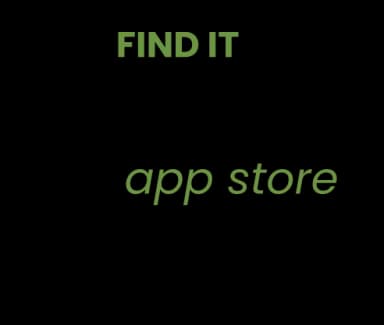Successful Examples of C2C Companies
I. General C2C Marketplaces
1. eBay
Image Credit: Homepage - eBay
eBay is one of the pioneers in the C2C marketplace space, connecting buyers and sellers worldwide. It offers a wide range of products, including new and used items, through auction-style or fixed-price listings. More recently, eBay has been expanding into a B2C model.
2. OLX
Image Credit: Homepage - OLX
OLX is a popular online classifieds platform in India, allowing users to post free ads to buy and sell a wide range of products and services. It covers categories such as electronics, vehicles, real estate, and more.
3. Amazon C2C Business Model
Image Credit: Homepage - Amazon Selling
Amazon’s C2C model differs significantly from dedicated C2C marketplace platforms. The inclusion of individual sellers and programs like Amazon Handmade does introduce elements of C2C interactions within its broader marketplace. However, the core functionality of the Amazon marketplace remains rooted in B2C and B2B transactions.
4. Craigslist
Image Credit: Homepage - Craigslist
Craigslist also operates in various regions, providing a marketplace for consumers to connect and post classified advertisements for jobs, housing, goods, and services.
5. Shopee
Image Credit: Homepage - Shopee
Shopee is a leading e-commerce marketplace platform operating in Southeast Asia and Taiwan. It started as a Shopee C2C marketplace and later evolved into a hybrid marketplace. It offers three seller programs: Shopee Marketplace (C2C), Shopee Mall, and Shopee Supermarket (both B2C).
6. Facebook Marketplace
Image Credit: Homepage - Facebook (Unique for Profiles)
Integrated with the Facebook platform, Marketplace on Facebook allows users to buy and sell items locally. It leverages the social network for user verification and communication.
II. Fashion and Apparel:
1. Depop
Image Credit: Homepage - Depop
Depop marketplace focuses on the fashion and lifestyle community. It combines social media features with e-commerce, enabling users to discover and buy unique items.
2. Bonanza
Image Credit: Homepage - Bonanza
A hybrid marketplace offering a mix of curated vintage and handmade goods alongside traditional ecommerce items, Bonanza attracts collectors and artisans alike.
III. Lifestyle
1. Etsy
Image Credit: Homepage - Etsy
Etsy is a leading online marketplace for handmade, vintage, and unique goods. Sellers can set up their own shops to showcase and sell their handmade creations.
2. ArtFire
Image Credit: Homepage - ArtFire
ArtFire is a marketplace for handmade, vintage, and craft supplies. It provides a platform for artisans to sell their creations directly to buyers.
IV. Real Estate
1. Zillow
Image Credit: Homepage - Zillow
Zillow is a real estate marketplace that provides information on homes, apartments, and mortgages. It allows users to buy, sell, and rent properties.
2. QuickrHomes
Image Credit: Homepage - QuickrHomes
QuickrHomes is a specialized segment of Quikr focused on real estate. Users can find and list properties for rent or sale, covering residential and commercial spaces.
V. Automobiles
1. BikeWale
Image Credit: Homepage - BikeWale
BikeWale is a platform for buying and selling new and used motorcycles. Users can explore a wide range of bikes, compare makes and models, and connect with sellers for transactions.
2. Spinny
Image Credit: Homepage - Spinny
Spinny is an online marketplace for buying and selling new and used cars. It is unique as it facilitates online auctions for sellers’ used cars to local used car dealers or individual customers. This creates a hybrid model involving C2B and C2C transactions.
VI. Local Services and Gig Economy
1. Sulekha
Image Credit: Homepage - Sulekha
Sulekha is a local service and C2C marketplace where users can find services ranging from home improvement to events and education. It connects service providers with service seekers.
2. Fiverr
Image Credit: Homepage - Fiverr
Fiverr is a global online peer-to-peer service marketplace. It covers a wide range of categories, including graphic design, writing, programming, and more.
Click here to go through the list of global C2C marketplace websites created using Shipturtle on Shopify.
10 Best Practices to Include in Your C2C E-commerce Marketplace
Creating your own C2C marketplace requires careful planning. It is all typically about balancing user experience with operational efficiency. Here’s a summary of best practices that ensured the success of the C2C marketplaces listed above:
Front-End (User Experience)
- Advanced Search and Filtering: Granular search options based on product categories, attributes, location, price range, and seller reputation enhance user experience and streamline the search process.
- High-Quality Listings & Content Curation: Encourage sellers with detailed descriptions, high-resolution images, and clear pricing information. Further, highlight high-quality listings, interesting stories, and community events to showcase the platform's best aspects.
- Seamless Transaction Flow: Offer a smooth and secure checkout process with trusted payment gateways and efficient order tracking.
- Personalization: Utilize data and purchase history for personalized recommendations and tailor the user experience.
Back-End (Operations and Technology)
- Scalable Infrastructure: Choose a technology stack that can handle the growing user base and transaction volume seamlessly.
- Efficient Matching Engine: Develop a matching algorithm that effectively connects buyers and sellers based on their needs and preferences.
- Automated Workflows: Automate repetitive tasks like listing approvals, notifications, and dispute resolution to improve efficiency.
- Powerful Data Analytics: Track user behavior, transaction data, and market trends to inform platform development and marketing strategies
Wrapping Up
Consumer-to-consumer marketplaces are no longer a niche trend—they’re a proven, scalable model for modern commerce. Whether it’s handcrafted goods, second-hand items, rentals, or hyperlocal services, C2C platforms thrive on community, trust, and simplicity.
With the right tools, launching a C2C marketplace is no longer a months-long tech project. Platforms like Shopify combined with apps like Shipturtle let you build, manage, and scale your own C2C ecosystem—vendor onboarding, payment automation, product moderation, and more—without writing a single line of code.
If you're ready to empower individuals to become sellers, create frictionless buyer journeys, and build a brand rooted in user-generated commerce, there's never been a better time to get started. Book a demo today!

























